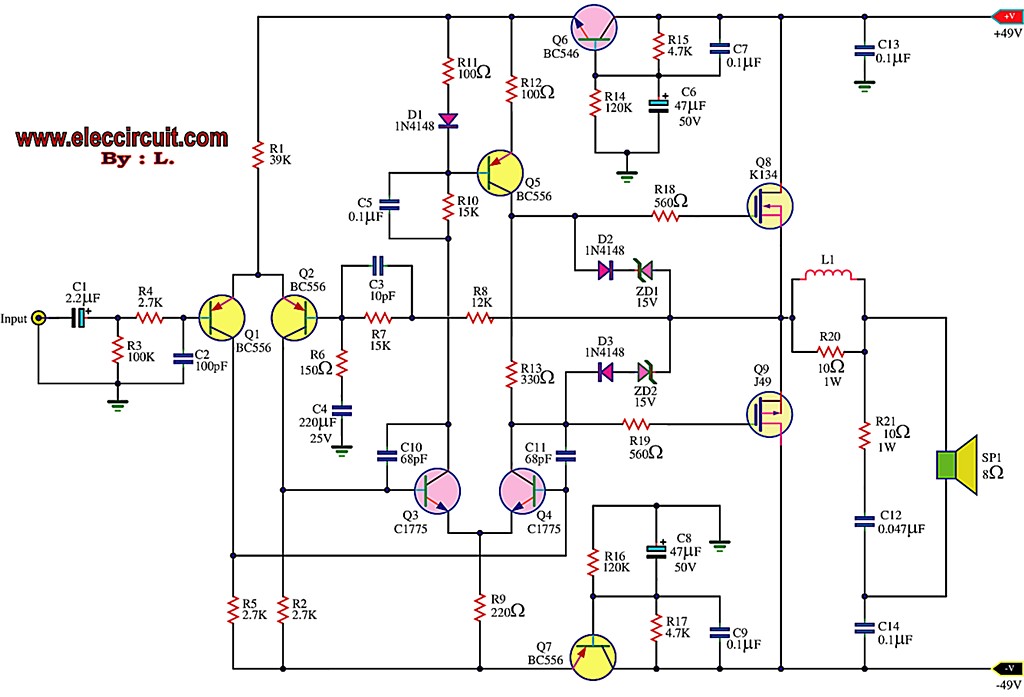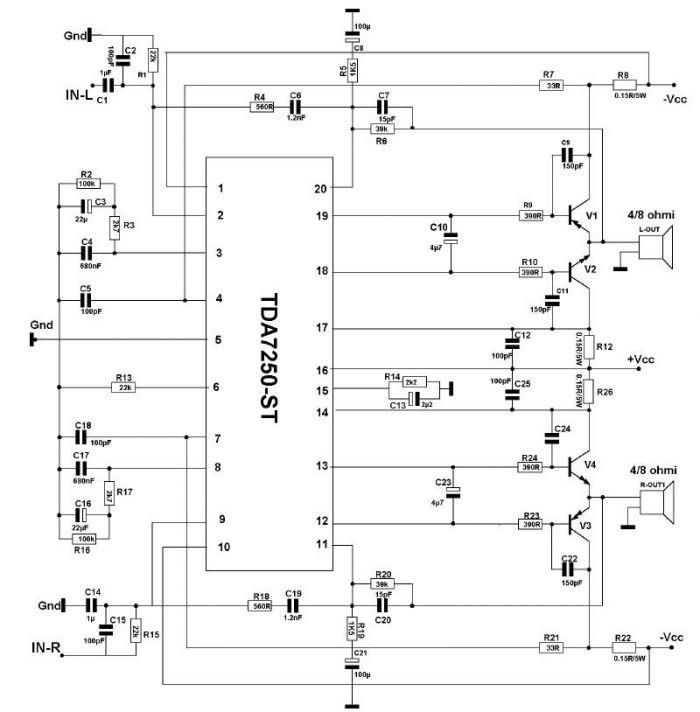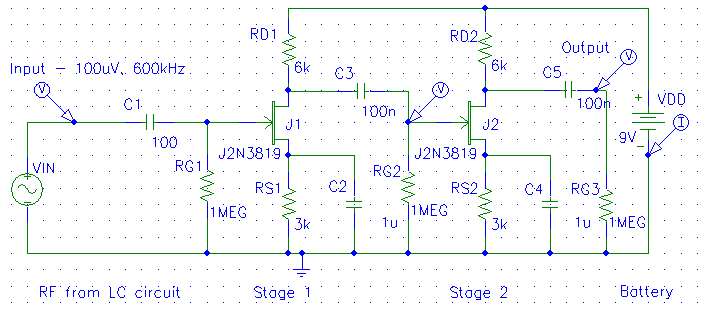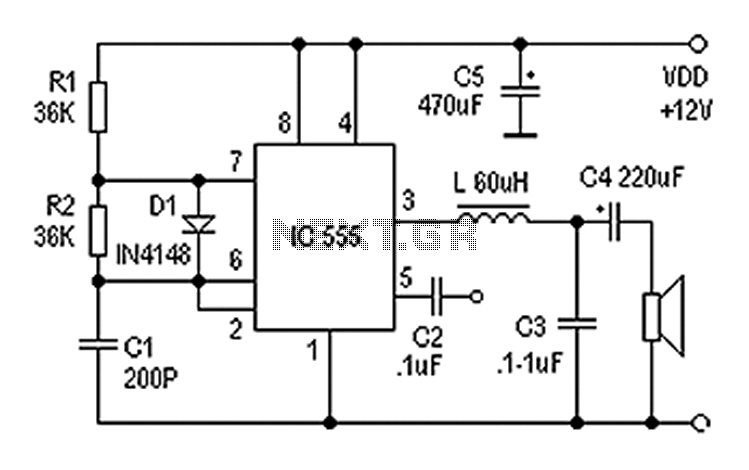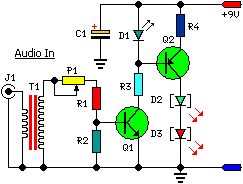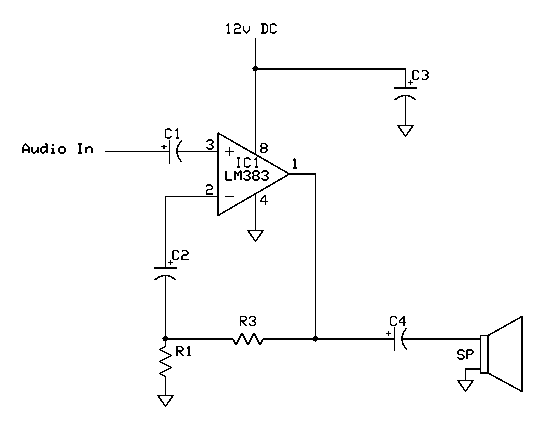
Sensitive optical receiver amplifier
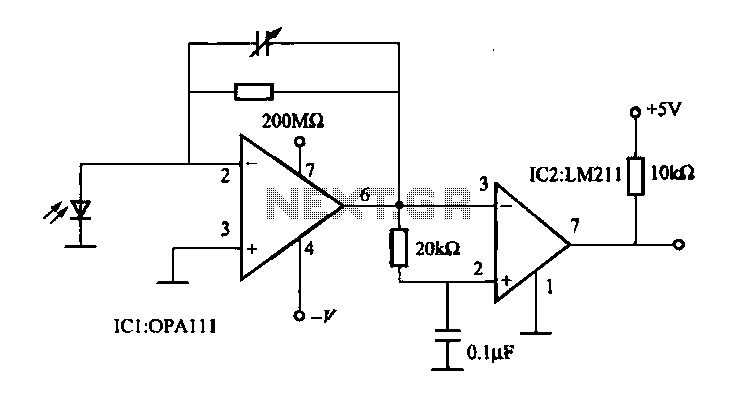
The OPA111 optical receiver amplifier features a feedback resistor of 200 MΩ, which is crucial due to the high gain of the amplifier. The OPA111 is designed to receive signals transmitted over optical fiber, specifically at a rate of 9600 baud using Manchester encoding. The amplified output is then fed into a voltage comparator, the LM211, which shapes the signal into standard data signals.
The OPA111 optical receiver amplifier operates effectively in high-gain applications, making it suitable for receiving low-level signals from optical fibers. The choice of a 200 MΩ feedback resistor is significant as it helps maintain the stability of the amplifier while ensuring that the gain remains sufficiently high to amplify the weak optical signals. The OPA111's ability to handle high-frequency signals makes it ideal for applications such as data transmission over fiber optics, where signal integrity is paramount.
Upon receiving the optical signals encoded in Manchester format at a baud rate of 9600, the OPA111 amplifies these signals, compensating for any losses that may occur during transmission through the optical medium. The amplified output signal is then directed to the LM211 voltage comparator, which serves to convert the analog amplified signal into a digital representation. The LM211 is selected for its fast response time and ability to accurately determine the threshold levels, ensuring that the output is a clean and reliable standard data signal suitable for further processing in digital systems.
In summary, the combination of the OPA111 optical receiver amplifier and the LM211 voltage comparator forms a robust circuit for optical signal processing, capable of efficiently handling data transmission in high-speed optical communication systems.FIG sensitive ((InW) .OPA111 optical receiver amplifier feedback resistor of FIG 200Mn, because the gain of the amplifier is high .OPAI11 receiving signals transmitted over an optical fiber (9600 Botemanqie Manchester data), is amplified feeding voltage comparator LM211, shaped into standard data signals.
The OPA111 optical receiver amplifier operates effectively in high-gain applications, making it suitable for receiving low-level signals from optical fibers. The choice of a 200 MΩ feedback resistor is significant as it helps maintain the stability of the amplifier while ensuring that the gain remains sufficiently high to amplify the weak optical signals. The OPA111's ability to handle high-frequency signals makes it ideal for applications such as data transmission over fiber optics, where signal integrity is paramount.
Upon receiving the optical signals encoded in Manchester format at a baud rate of 9600, the OPA111 amplifies these signals, compensating for any losses that may occur during transmission through the optical medium. The amplified output signal is then directed to the LM211 voltage comparator, which serves to convert the analog amplified signal into a digital representation. The LM211 is selected for its fast response time and ability to accurately determine the threshold levels, ensuring that the output is a clean and reliable standard data signal suitable for further processing in digital systems.
In summary, the combination of the OPA111 optical receiver amplifier and the LM211 voltage comparator forms a robust circuit for optical signal processing, capable of efficiently handling data transmission in high-speed optical communication systems.FIG sensitive ((InW) .OPA111 optical receiver amplifier feedback resistor of FIG 200Mn, because the gain of the amplifier is high .OPAI11 receiving signals transmitted over an optical fiber (9600 Botemanqie Manchester data), is amplified feeding voltage comparator LM211, shaped into standard data signals.
Warning: include(partials/cookie-banner.php): Failed to open stream: Permission denied in /var/www/html/nextgr/view-circuit.php on line 713
Warning: include(): Failed opening 'partials/cookie-banner.php' for inclusion (include_path='.:/usr/share/php') in /var/www/html/nextgr/view-circuit.php on line 713
